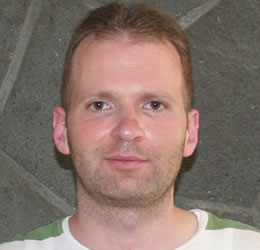One step closer towards understanding of the black holes thanks to the University of Chile
Wednesday, March 30, 2016
 Marko Stalevski, Investigador postdoctoral DAS, U. de Chile |
 Paulina Lira, Astrónoma DAS, FCFM U. de Chile
|
The discovery will appear next Friday in the scientific journal Monthly Notices of the Royal Astronomical Society. The article describes the interaction between the radiation and the dusty clouds that surround black holes.
Science fiction movies and TV shows such as Interstellar and Star Trek can make black holes appear as everyday objects. But this time it is astronomers working in our country who, after months of research and study using the most advanced computers, have discovered something unknown about them.
"We performed complex calculations on supercomputers that simulated the interaction between light and matter surrounding supermassive black holes (million times more massive than our Sun), known as “Active Galactic Nuclei", explains Marko Stalevski, postdoctoral researcher of the Astronomy Department of the University of Chile, and first author of the article.
Before this study it was known that when black holes are fed, that is, when something falls towards its center, "the material reaches very high temperatures and starts emitting radiation. What was not known was how much of this radiation was captured by the clouds of gas and dust (a structure astronomers call the 'dusty torus') that surround the central object. We were able to computationally simulate this and realize that it retained rather different quantities than those previously thought", says the scientist.
For Paulina Lira, astrophysicist at the University of Chile and one of the authors of the paper, this discovery is especially relevant: "This findings let us know how much black holes grow when they are being fed. If we do not know how much radiation is intercepted by the clouds surrounding the central object, then we cannot quantify this amount. This research allow us to know this much more accurately now."
The research took 12 months and simulations were conducted in several supercomputers, with a prominent role of Leftraru, the supercomputer located at the Center for Mathematical Modeling of the U. de Chile, where about two-thirds of the calculations were performed.
What's next
"We expect that other astronomers will take our results and apply them to their studies of black holes, in order to better understand how they are born and how they grow from the beginning of the Universe up to now," concludes Dr. Lira.
The research will be published on Friday, April 1st on the website of the journal Monthly Notices of the Royal Astronomical Society, Oxford University Press.
More information in http://arxiv.org/abs/1602.06954.
|
Representación artística de un AGN, agujero
negro super masivo en el centro de una galaxia rodeado de
polvo y gas. El agujero negro se encuentra en el centro de
la animación rodeado por un disco de acreción (material cayendo
al agujero negro), mientras a más distancia se encuentran
nubes de polvo que se ven alteradas por los cambios de luminosidad
producidos en el disco interior.
Credito: Ricardo Ramírez, estudiante de postgrado DAS. |




